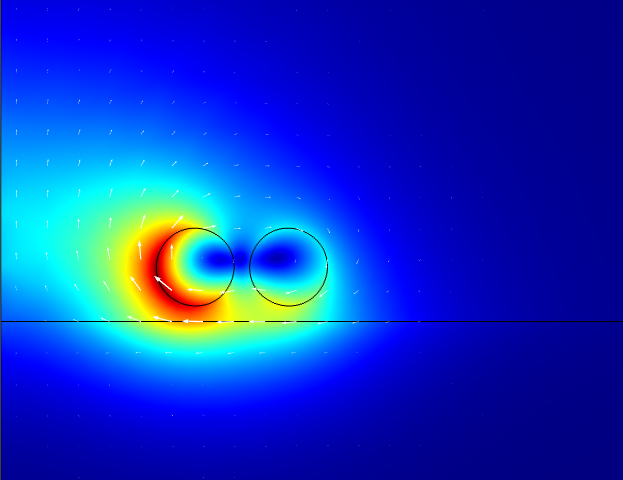

In inductor applications where the total losses are dominated by core loss rather than copper loss, an overall improvement in performance can be achieved by using a lower permeability core material. Under this condition, the core experiences a total peak to peak AC flux density swing (ΔB) that is twice the value of peak AC flux density (Bpk) calculated with the above formulas as illustrated: This formula is useful in determining the peak AC flux density (Bpk) to be used with the core loss curves for sinewave applications such as 60 Hz differential-mode line filter inductors, resonant inductors in power supplies, and for the fundamental line frequency signal in power factor correction chokes. The form factor for a square wave is 1.00. Since the form factor is equal to the rms value divided by the average value for a half-cycle, the form factor for a sinewave is 1.11 (π/(2√2). The change in constant from 4 to 4.44 is due to the form factor of a sinewave. The factor of 10 8 is due to the Bpk conversion from tesla to gauss (1 tesla = 10 4 gauss) and the cross-sectional area (A) conversion from m2 to cm2 (m 2 = 10 4 cm 2). In cgs units, the following formula is commonly used for a sinewave signal with voltage in rms: The formula to calculate the peak AC flux density for an alternating signal based on the average voltage per half-cycle in SI units is: The relative core loss comparison between materials at other AC flux densities will differ according to each materials response to operating AC flux density. This table provides a quick comparison of core loss in mW/cm 3 at various frequencies for a given AC flux density for each material. The core loss in milliwatts per cubic centimeter (mW/cm 3) as a function of peak AC flux density in gauss is shown for various frequencies. These curves have a typical tolerance of ?5%. This information results from sinewave core loss measurement made on a Clarke-Hesse V-A-W Meter. The core losses are due to hysteresis, eddy current and residual losses in the core material.Ĭore loss curves for each material are shown on each material page. The loss generated for a given material is a function of operating frequency and total flux swing (ΔB). Core losses are a result of an alternating magnetic field in a core material.


 0 kommentar(er)
0 kommentar(er)
